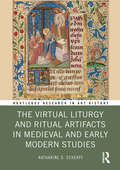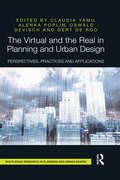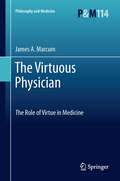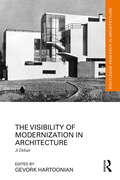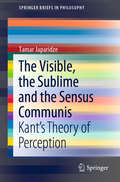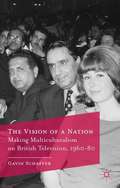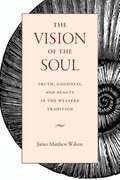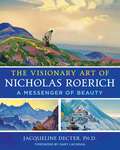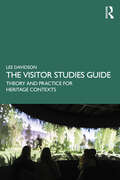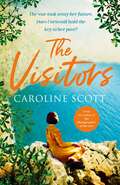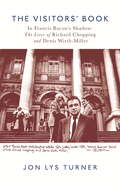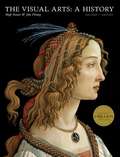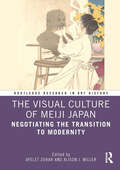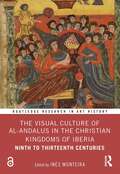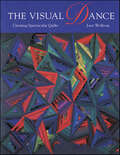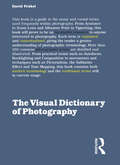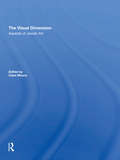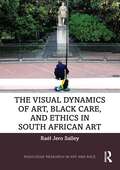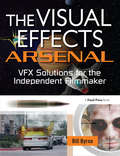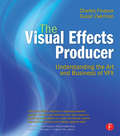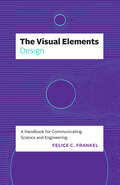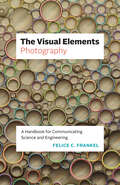- Table View
- List View
The Virtual Life of Film
by D. N. RodowickAs almost (or, truly, virtually) every aspect of making and viewing movies is replaced by digital technologies, even the notion of "watching a film" is fast becoming an anachronism. With the likely disappearance of celluloid film stock as a medium, and the emergence of new media competing for an audience, what will happen to cinema--and to cinema studies? In the first of two books exploring this question, D. N. Rodowick considers the fate of film and its role in the aesthetics and culture of moviemaking and viewing in the twenty-first century. Here Rodowick proposes and examines three different critical responses to the disappearance of film in relation to other time-based media, and to the study of contemporary visual culture. Film, he suggests, occupies a special place in the genealogy of the arts of the virtual: while film disappears, cinema persists--at least in the narrative forms imagined by Hollywood since 1915. Rodowick also observes that most so-called "new media" are fashioned upon a cinematic metaphor. His book helps us see how digital technologies are serving, like television and video before them, to perpetuate the cinematic as the mature audiovisual culture of the twentieth century--and, at the same time, how they are preparing the emergence of a new audiovisual culture whose broad outlines we are only just beginning to distinguish.
The Virtual Liturgy and Ritual Artifacts in Medieval and Early Modern Studies (Routledge Research in Art History)
by Katharine D. ScherffExamining the history of altar decorations, this study of the visual liturgy grapples with many of the previous theoretical frameworks to reveal the evolution and function of these ritual objects. Using an interdisciplinary approach, this book uses traditional ar- historical methodologies and media technology theory to reexamine ritual objects. Previous analysis has not considered the in-between nature of these objects as deliberate and virtual conduits to the divine. The liturgy, the altarpiece, the altar environment, relics, and their reliquaries are media. In a series of case studies, several objects tell a different story about culture and society in medieval Europe. In essence, they reveal that media and media technologies generate and modulate the individual and collective structure of feelings of sacredness among assemblages of humans and nonhumans. The book will be of interest to scholars working in art history, medieval studies, early modern studies, and architectural history.
The Virtual and the Real in Planning and Urban Design: Perspectives, Practices and Applications
by Gert De Roo Oswald Devisch Claudia Yamu Alenka PoplinThe Virtual and the Real in Planning and Urban Design: Perspectives, Practices and Applications explores the merging relationship between physical and virtual spaces in planning and urban design. Technological advances such as smart sensors, interactive screens, locative media and evolving computation software have impacted the ways in which people experience, explore, interact with and create these complex spaces. This book draws together a broad range of interdisciplinary researchers in areas such as architecture, urban design, spatial planning, geoinformation science, computer science and psychology to introduce the theories, models, opportunities and uncertainties involved in the interplay between virtual and physical spaces. Using a wide range of international contributors, from the UK, USA, Germany, France, Switzerland, Netherlands and Japan, it provides a framework for assessing how new technology alters our perception of physical space.
The Virtuous Physician
by James A. MarcumAlthough modern medicine enjoys unprecedented success in providing excellent technical care, many patients are dissatisfied with the poor quality of care or the unprofessional manner in which physicians sometimes deliver it. Recently, this patient dissatisfaction has led to quality-of-care and professionalism crises in medicine. In this book, the author proposes a notion of virtuous physician to address these crises. He discusses the nature of the two crises and efforts by the medical profession to resolve them and then he briefly introduces the notion of virtuous physician and outlines its basic features. Further, virtue theory is discussed, along with virtue ethics and virtue epistemology, and specific virtues, especially as they relate to medicine. The author also explores the ontological priority of caring as the metaphysical virtue for grounding the notion of virtuous physician, and two essential ontic virtues--care and competence. In addition to this, he examines the transformation of competence into prudent wisdom and care into personal radical love to forge the compound virtue of prudent love, which is sufficient for defining the virtuous physician. Lastly, two clinical case stories are reconstructed which illustrate the various virtues associated with medical practice, and it is discussed how the notion of virtuous physician addresses the quality-of-care and professionalism crises.
The Visibility of Modernization in Architecture: A Debate (Routledge Research in Architecture)
by Gevork HartoonianThis edited collection explores the visibility of modernization in architecture produced in different capitalist regions across the world and provides readers with a historico-theoretical and historico-geographical discussion. Focusing on a particular building type, an influential architect’s work, as well as relevant texts and documents, each chapter addresses the many facets of "delay" which are central to the problematization of capitalism’s progressive dissemination of technological and aesthetic regimes of modernism. This collection underlines the centrality of temporality for a critical understanding of colonialism, modernism, and capitalism. The book is primarily concerned with the historical timeline, the tangential point when a nation enters modernization processes. In exploring modernism in diverse regions such as East Asia, Pacific, Eastern Europe, and Iran, each chapter addresses the historiographic and architectonic unfolding of modernization beyond the western hemisphere. The exploration of these diverse case-studies will be of interest to students of architecture and researchers working on the collision of temporalities and the subject's critical importance for different country’s built-environments.
The Visible, the Sublime and the Sensus Communis: Kant’s Theory of Perception (SpringerBriefs in Philosophy)
by Tamar JaparidzeThis book argues that Kant develops a theory of perception in the Critique of Judgment from which one can redefine his entire project, viewing and using aesthetics as its backbone, from the transcendental aesthetic of the First Critique to the Critique of Taste in the Third. The author shows us how Kant exonerates the role of faculties that account for such judgments linked by inner senses, inclusive of sensus communis. By re-examining the role of the aesthetic within Kant's critical philosophy, the compelling force of the aesthetic turn is revealed in modern philosophy. The text includes Heidegger’s, Hegel’s and Diderot's complex relationship to Kant in this context.This text provides important scholarship for those interested in the Kantian influence on German Idealism, the aesthetic turn in the continental tradition, especially the Frankfurt school, and more generally, those interested in the encounter between philosophy and art in this historical context.
The Vision of a Nation
by Gavin SchafferTelling the stories behind television's approaches to race relations, multiculturalism and immigration in the 'Golden Age' of British television, the book focuses on the 1960s and 1970s and argues that the makers of television worked tirelessly to shape multiculturalism and undermine racist extremism.
The Vision of the Soul: Truth, Beauty, and Goodness in the Western Tradition
by James Matthew WilsonStory-telling is foundational to the forms of the fine arts, but it is no less foundational to human reason. Human life in turn constitutes a specific kind of form―a story form. The ancient conception of human life as a pilgrimage to beauty itself is one that we can fully embrace only if we see the essential correlation between reason and story and the essential convertibility of truth, goodness and beauty in beauty. By turns a study in fundamental ontology, aesthetics, and political philosophy, Wilson's book invites its readers to a renewal of the West's intellectual tradition.
The Visionary Art of Nicholas Roerich: A Messenger of Beauty
by Jacqueline DecterA fully illustrated biography of mystic, artist, and explorer Nicholas Roerich• Includes 88 color plates showcasing the variety of Roerich&’s artistic talent, from breathtaking Himalayan landscapes to set and costume designs, most notably for Stravinsky&’s The Rite of Spring• Examines Roerich&’s profound love for folk traditions of Russia, India, and Tibet and his spiritual quests across the Himalayan Mountains in search of beauty and the lost paradise of Shambala• Reveals how Roerich&’s life and work significantly influenced the development of modern art and cultureNicholas Roerich (1874–1947) was a Russian artist, writer, archaeologist, explorer, mystic, theosophist, and peacemaker who left a rich legacy of nearly 7,000 visionary paintings and 30 books on the mystic East. Twice nominated for the Nobel Peace Prize due to the Roerich Peace Pact—a remarkable treaty signed by President Roosevelt that sought to preserve cultural monuments during times of war—Roerich had a profound love for folk traditions of Russia, India, and Tibet, especially legends of lost cities and paradise. Together with his wife and two sons, from the 1890s into the 1930s, Roerich embarked on a number of spiritual quests through India, the Gobi Desert, the Altai and Kunlun Mountains, Mongolia, and Tibet, crisscrossing the Himalayan Mountains many times before settling in Kulu, India, in the shadows of the great mountain range. Through his explorations throughout the world and the immersive art he created during those travels, he was seeking the grains of spiritual truth behind the legends of paradise lost, including during his pilgrimages in search of Shambala. Revealing the mystical world of Nicholas Roerich in stunning full color, Jacqueline Decter invites us to witness Roerich&’s far-reaching vision and dedication to beauty across the full scope of his inspiring life and artistic career. This new hardcover edition features Decter&’s translations of many Russian texts into English as well as 88 color plates showcasing the variety of Roerich&’s artistic talent, from breathtaking Himalayan landscapes and spiritual themes to set and costume designs, most notably for Stravinsky&’s The Rite of Spring. A celebration of Roerich as both visionary artist and visionary explorer, this fully illustrated biography illuminates a man whose life and work significantly influenced the development of modern art and culture.
The Visionary Eye: Essays in the Arts, Literature, and Science
by Jacob BronowskiA collection of essays which discuss about examples taken from across the spectrum of the arts, past and present--music, poetry, painting and sculpture, architecture, industrial design, and engineering artifacts.
The Visitor Studies Guide: Theory and Practice for Heritage Contexts
by Lee DavidsonThe Visitor Studies Guide offers an up-to-date overview of the rapidly expanding field of theory and research practice relating to the public use of museums, galleries, libraries, archives, memorials, zoos, aquariums, planetariums, gardens, urban parks, arboretums, nature centres, historic sites, and protected areas.It surveys the field’s evolution, current challenges, and future possibilities. It reviews the most recent applications and theoretical advances in Visitor Studies and connects theory and practice through a diverse range of case studies from practitioners around the world and an introduction to the basic principles of research design. It outlines an agenda for building a more integrated and theoretically driven field which is interdisciplinary and embraces critical perspectives. It shows how Visitor Studies can be a vital tool for heritage agencies to fulfil their missions for positive social and environmental impact. It also provides a platform for a more globally connected community of practice by profiling voices from previously under-represented regions, such as China, Latin America, and Aotearoa New Zealand.Aimed at a global audience, The Visitor Studies Guide is an introduction to the field for students and heritage practitioners and will be a valuable resource for teaching in museum and heritage programmes. For experienced practitioners, it offers a comprehensive view of current trends, new approaches and methods across different heritage contexts, and a reflection on the future scope and direction of the field.
The Visitors
by Caroline ScottFrom the highly acclaimed author of The Photographer of the Lost, a BBC Radio 2 Book Club Pick, comes a tale of a young war widow and one life-changing, sun-drenched visit to Cornwall in the summer of 1923... Esme Nicholls is to spend the summer in Cornwall. Her late husband Alec, who died fighting in the war, grew up in Penzance, and she&’s hoping to learn more about the man she loved and lost. While there, she will stay with Gilbert, in his rambling seaside house, where he lives with his former brothers in arms. Esme is fascinated by this community of eccentric artists and former soldiers, and as she gets to know the men and their stories, she begins to feel this summer might be exactly what she needs. But everything is not as idyllic as it seems – a mysterious new arrival later in the summer will turn Esme&’s world upside down, and make her question everything she thought she knew about her life, and the people in it.Full of light, laughter and larger-than-life characters, The Visitors is a novel of one woman finally finding her voice and choosing her own path forwards. Praise for Caroline Scott: &‘A page-turning literary gem&’ The Times, Best Books of 2020 'A touching novel of love and loss' Sunday Times 'A beautifully written must-read' heat 'A gripping, devastating novel' Sarra Manning, RED &‘A powerful novel&’ Good Housekeeping &‘A heartbreaking read&’ Anita Frank 'Breathtaking exploration of loss, love and precious memories&’ My Weekly, Pick of the Month &‘Achingly moving and most beautifully written&’ Rachel Hore &‘This beautiful book packs a huge emotional punch&’ Fabulous &‘Drew me in from the first line and held me enthralled until the very end' Fiona Valpy &‘Quietly devastating' Daily Mail 'A compulsive, heart-wrenching read' Liz Trenow &‘Powerful&’ Woman & Home 'Page turning, mysterious, engrossing and compelling' Lorna Cook &‘A carefully nuanced, complex story&’ Woman&’s Weekly &‘Caroline Scott evokes the damage and desolation of the Great War with aching authenticity' Iona Grey &‘Poignant&’ Best 'Momentous, revelatory and astonishing historical fiction!' Historical Novel Society &‘Wonderful and evocative&’ Suzanne Goldring &‘Based on true events, this is a powerful story&’ Bella &‘Immersive, poignant, intricately woven&’ Judith Kinghorn &‘An evocative read&’ heat &‘The story left me breathless&’ Kate Furnivall &‘A poignant hymn to those who gave up their lives for their country and to those who were left behind&’ Fanny Blake 'I was utterly captivated by this novel' Isabelle Broom
The Visitors' Book: In Francis Bacon's Shadow: The Lives of Richard Chopping and Denis Wirth-Miller
by Jon Lys TurnerDenis Wirth-Miller and Dicky Chopping were a couple at the heart of the mid-twentieth century art world, with the visitors' book of the Essex townhouse they shared from 1945 until 2008 painting them as Zeligs of British society. The names recorded inside make up an astonishing supporting cast - from Francis Bacon to Lucian Freud to Randolph Churchill to John Minton. Successful artists, although not household names themselves, writing Dicky and Denis off as just footnotes in history would be a mistake. After Denis's death in 2010, Jon Lys-Turner, one of two executors of the couple's estate, came into possession of an extraordinary archive of letters, works of art and symbolically loaded ephemera the two had collected since they met in the 1930s. It is no exaggeration to state that this archive represents a missing link in British art history - the wealth of new biographical information disclosed about Francis Bacon, for example, is truly staggering. The Visitors' Book is both an extraordinary insight into the minutiae of Dicky and Denis's life together and what it meant to be gay in pre-Wolfenden Britain, as well as a pocket social history of the era and a unique perspective into mid-twentieth century art. With reams of previously unseen material, this is a fascinating and unique opportunity to delve into post-war Britain.
The Visual Arts: A History
by John Fleming Hugh HonourAn authoritative, balanced, and enlightened account of the history of art, ranging from the primitive art of hunters 30,000 years ago to examples of the most controversial art forms of today. This book contains over 1400 superb illustrations, including color maps and architectural plans, enabling the reader to gain perspective of the global scope of this subject. Encompassing the arts of Asia, Africa, Oceania, Europe, and the Americas, this book covers painting, mosaic, drawing, printmaking, sculpture, architecture, and photography, as well as describing historical trends that influenced all trends in art from around the world. For those needing to gain perspective regarding the history of art in our world, including art gallery owners, art collectors, and those entering the field of graphic design and art production.
The Visual Culture of Meiji Japan: Negotiating the Transition to Modernity (Routledge Research in Art History)
by Ayelet Zohar Alison J. MillerThis volume examines the visual culture of Japan’s transition to modernity, from 1868 to the first decades of the twentieth century. Through this important moment in Japanese history, contributors reflect on Japan’s transcultural artistic imagination vis-a-vis the discernment, negotiation, assimilation, and assemblage of diverse aesthetic concepts and visual pursuits. The collected chapters show how new cultural notions were partially modified and integrated to become the artistic methods of modern Japan, based on the hybridization of major ideologies, visualities, technologies, productions, formulations, and modes of representation. The book presents case studies of creative transformation demonstrating how new concepts and methods were perceived and altered to match views and theories prevalent in Meiji Japan, and by what means different practitioners negotiated between their existing skills and the knowledge generated from incoming ideas to create innovative modes of practice and representation that reflected the specificity of modern Japanese artistic circumstances. The book will be of interest to scholars working in art history, Japanese studies, Asian studies, and Japanese history, as well as those who use approaches and methods related to globalization, cross-cultural studies, transcultural exchange, and interdisciplinary studies.
The Visual Culture of al-Andalus in the Christian Kingdoms of Iberia: Ninth to Thirteenth Centuries (Routledge Research in Art History)
by Inés MonteiraThis book addresses the reception of Islamic visual culture by the northern Iberian kingdoms, by systematically comparing works of art from both sides and fleshing out their historical context.This study includes figurative and iconographic motifs, architectural forms, and even the spolia from constructions and Arabic inscriptions that were embedded in Christian buildings. The Islamic visual culture of al-Andalus was often transformed as it was recreated by Christian hands, bringing to the fore various nuances in the relationship between the two religious communities. Artistic transfer was conditioned by social coexistence between Christians and Muslims—both in the caliphate al-Andalus and in the northern realms—and military conflict. To approach the different ways in which Andalusi visual culture was received in the northern kingdoms, while embracing the vast diversity of case studies available, this book is divided into three thematic sections: Reinterpretation, Appropriation, and Artistic Transfers.This book will be of interest to scholars working in art history, visual culture, and medieval studies.
The Visual Dance: Creating Spectacular Quilts
by Joen WolfromAn exciting journey into the world of design, The Visual Dance is a presentation of nature's design basics to help you build a foundation for your own style. This inspiring book clearly explains the how-tos of design for quilters and artists alike. Gallery of spectacular quilts, hundreds of detailed drawings, and 11 of Joen's original designs illuminate the discussion. Exercises guide you in understanding and using the design principles.
The Visual Dictionary of Photography
by David PräkelThe Visual Dictionary of Photography provides clear definitions of key terms and concepts, backed up by hundreds of illustrative examples. Covering practical terms, it deals with the terminology of both digital and traditional photography. David Präkel has produced an invaluable resource for anyone interested in photography, lens-based media and related visual arts. This book serves not only to explain terms and words but also acts as a source of inspiration, encouraging exploration through understanding.Over 250 terms are explained and contextualised, with concise definitions accompanied by illustrations and examples taken from historical and contemporary photography.The dictionary covers analogue terms still in current usage as well as modern digital terminology such as Raw format and High dynamic range. It also defines a wide variety of practical terms, including ISO speed, Backlighting and Noise, as well as conceptual terms and photographic styles, ranging from Photojournalism to Distortion.
The Visual Dimension: Aspects Of Jewish Art
by Clare MooreThis book looks at art historical explorations, matters of archival legitimacy, the survival of fakes and forgeries and many other aspects of Jewish art. It commemorates the life and work of Isaiah Shachar through the medium of papers given at the first international conference on Jewish art.
The Visual Dynamics of Art, Black Care, and Ethics in South African Art (Routledge Research in Art and Race)
by Raél Jero SalleyThis book interprets relationships between art and ethics in the context of contemporary South African art.Nearly three decades after inaugurating political freedom in a democratic form, the infrastructure of South Africa faces palpable issues and challenges to the social fabric. The social tension involves painful struggles for decolonization and violent debates about the removal of colonial statues, change of colonial names, transformation of universities, and curriculum change. This book does critical work in art history, theory, criticism, and visual culture by looking from and looking after social differences to interpret the potential impact of contemporary media and mediation. Artists examined include Zanele Muholi, Mohau Modisekeng, Dineo Seshee Bopape, Hasan and Husain Essop, and Kemang Wa Lehulere.This book will be of interest to scholars working in art history, contemporary art, visual culture, art theory, ethics, aesthetics, philosophy of art, and African studies.
The Visual Effects Arsenal: VFX Solutions for the Independent Filmmaker
by Bill ByrneBuild your VFX arsenal with quick-access, step-by-step instruction on how to create today's hottest digital VFX shots. This essential toolkit provides techniques for creating effects seen in movies such as 300, Spiderman 3, Predator and others, with lessons on how-to:* splatter blood or digitally lop someone's arm off* create a scene with actors running from an explosion* create the "twin effect" (same actor, same location, 2 performances)* produce space-ship dog fightsOrganized in a 'cookbook' style, this allows you to reference a certain effect in the index and immediately access concise instructions to create that effect. Techniques are demonstrated in each of the most popular software tools- After Effects, Final Cut Studio, Photoshop, and Combustion are all covered. Brilliant, 4-color presentation provides inspiration and stimulating visual guidance to the lessons presented, while the downloadable resources contain project media files enabling you to put concepts learned into immediate practice.
The Visual Effects Producer: Understanding the Art and Business of VFX
by Susan Zwerman Charles FinanceFirst published in 2010. Routledge is an imprint of Taylor & Francis, an informa company.
The Visual Elements—Design: A Handbook for Communicating Science and Engineering (The Visual Elements)
by Felice C. FrankelWith insights and examples from designers at publications from Nature to the New York Times, an essential guide to creating figures and presentations. In this short handbook, award-winning science communicator Felice C. Frankel offers a quick guide for scientists and engineers who want to share—and better understand—their research by designing compelling graphics for journal submissions, grant applications, presentations, and posters. Like all the books in the Visual Elements series, this handbook is also a training tool for researchers. Distilling her celebrated books and courses to the essentials, Frankel shows scientists and engineers, from students to primary investigators, the importance of thinking visually. This crucial volume in the Visual Elements series offers a wealth of engaging design examples. Case studies and advice from designers at prestigious publications and researchers’ own before-and-after examples show how even the smallest changes—to color, type, composition, and layering—can greatly improve communication. Ideal for researchers who want a foothold for presenting and preparing their work for everything from conferences to publications, the book explains the steps for creating a concise and communicative graphic to highlight the most important aspects of research—and to clarify researchers’ own thinking. The resulting book is an essential element of any scientist’s, engineer’s, or designer’s library.
The Visual Elements—Photography: A Handbook for Communicating Science and Engineering (The Visual Elements)
by Felice C. FrankelFor novice or pro, primary investigator or postdoc, the essentials for photographing science and technology for journals, grant applications, and public understanding. Award-winning photographer Felice C. Frankel, whose work has graced the covers of Science, Nature,and Scientific American, among other publications, offers a quick guide for scientists and engineers who want to communicate—and better understand—their research by creating compelling photographs. Like all the books in the Visual Elements series, this short guide uses engaging examples to train researchers to learn visual communication. Distilling her celebrated books and courses to the essentials, Frankel shows scientists and engineers the importance of thinking visually. When she creates stunning images of scientific phenomena, she is not only interested in helping researchers to convey understanding to others in their research community or to gain media attention, but also in making these experts themselves “look longer” to understand more fully. Ideal for researchers who want a foothold for presenting and preparing their work for conferences, journal publications, and funding agencies, the book explains four tools that all readers can use—a phone, a camera, a scanner, and a microscope—and then offers important advice on composition and image manipulation ethics. The Visual Elements—Photography is an essential element in any scientist’s, engineer’s, or photographer’s library.

